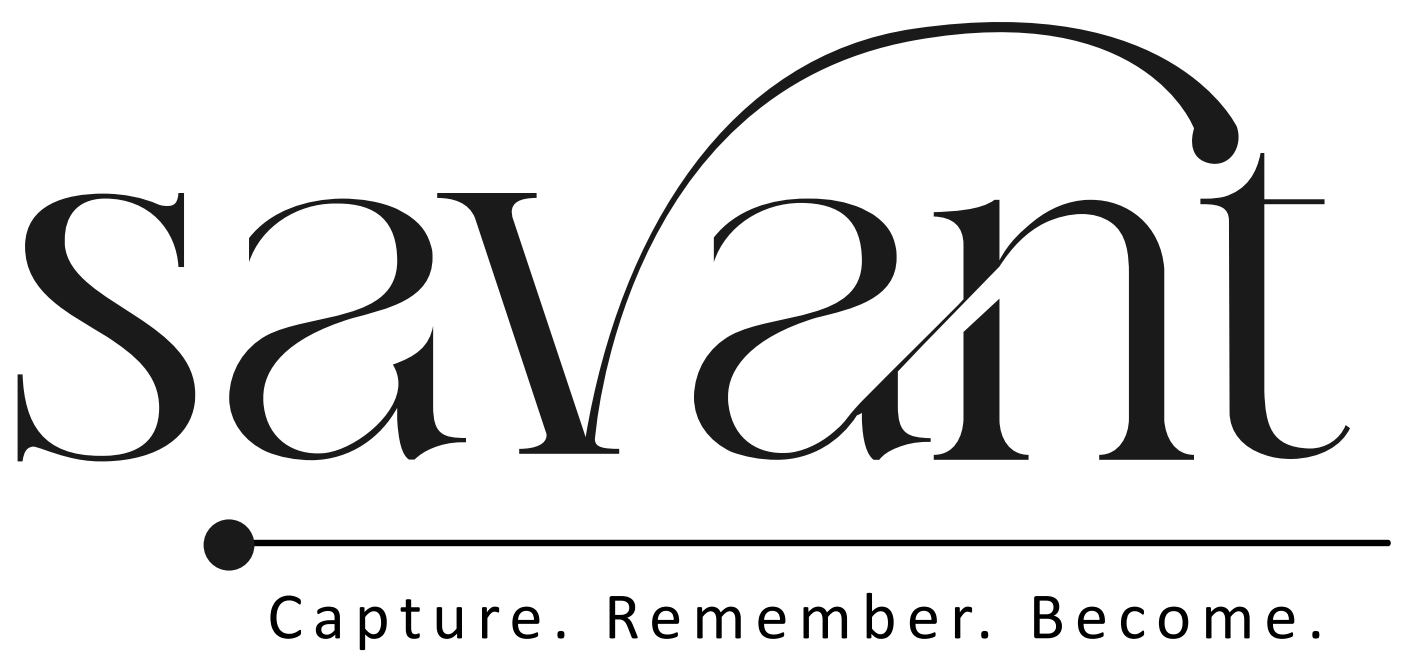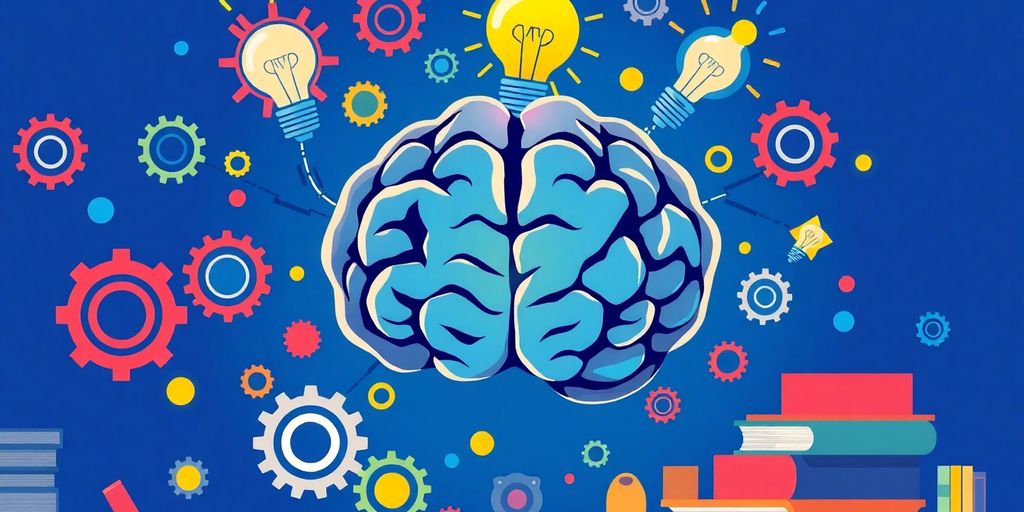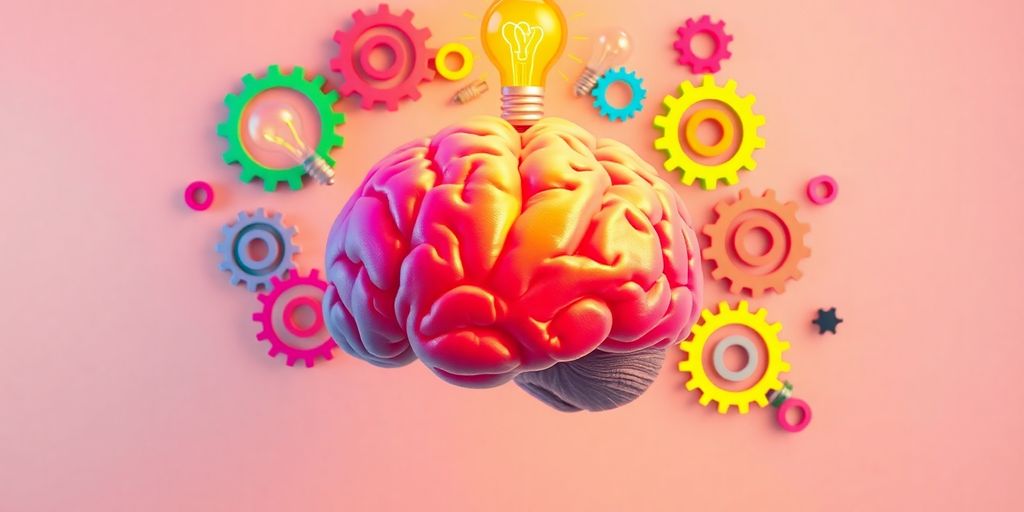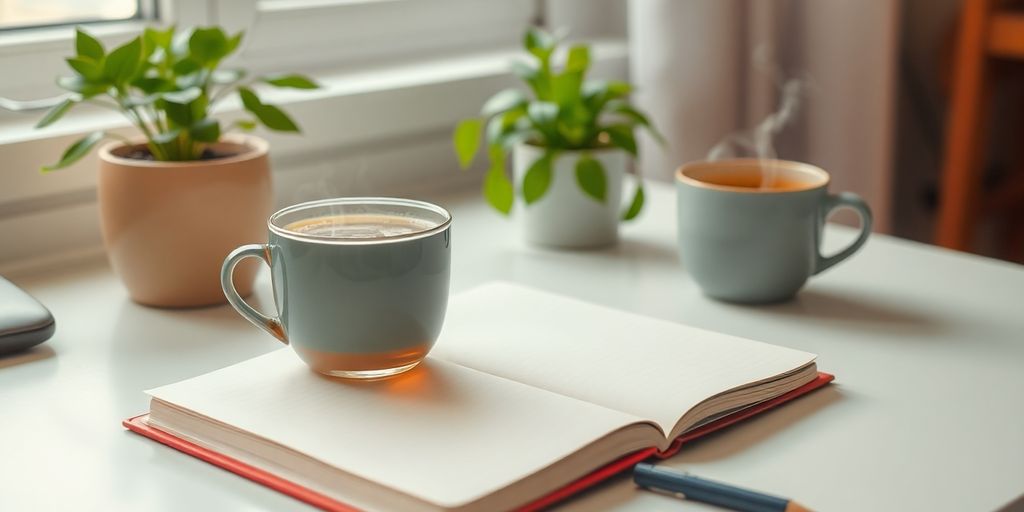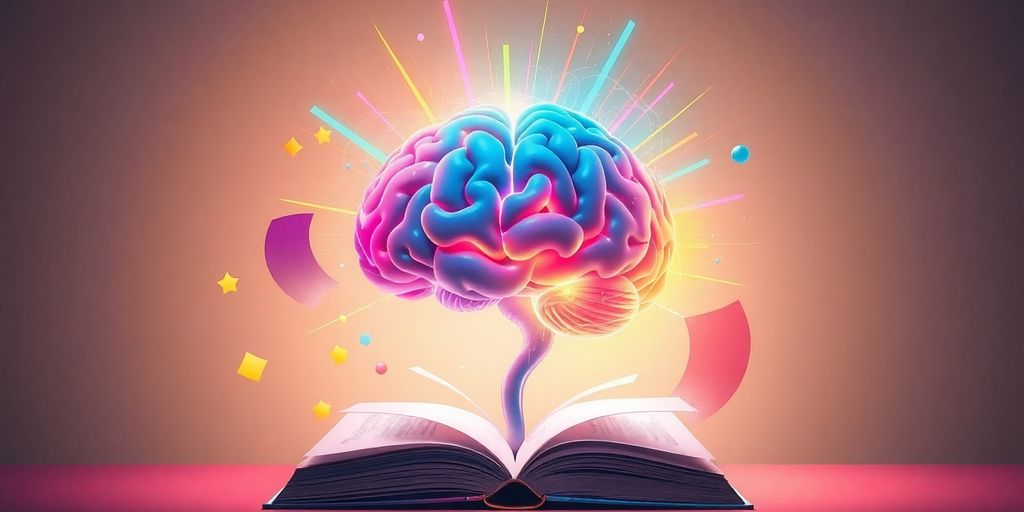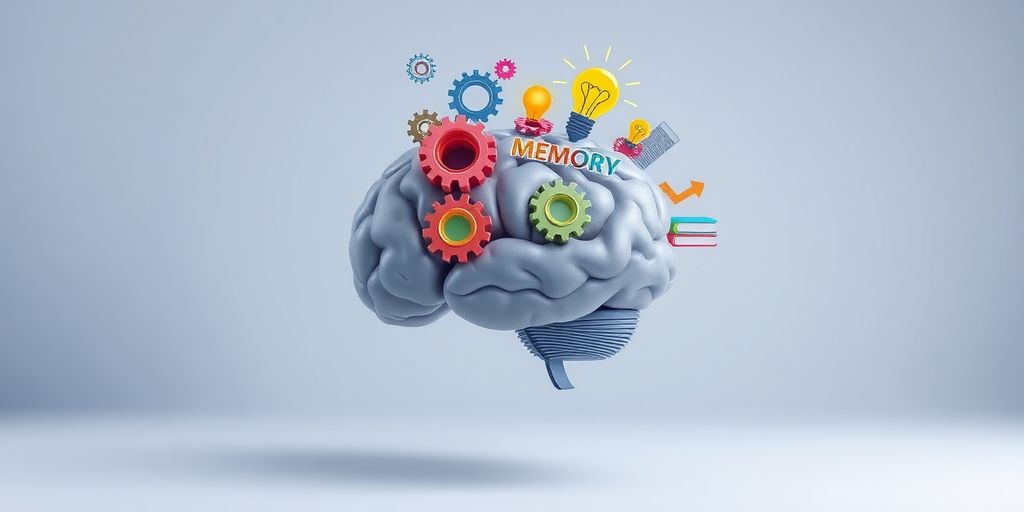Learning effectively is more than just reading and memorizing; it’s about using smart strategies to help you remember what you’ve studied. In this article, we will explore various methods that can boost your memory retention and make your study sessions more productive. From understanding how memory works to practical tips for studying, these strategies will help you master the art of memory.
Key Takeaways
- Engage actively with the material to improve understanding and retention.
- Use spaced repetition to revisit information over time, enhancing memory retention.
- Incorporate multiple senses in learning to create stronger memory connections.
- Create a distraction-free study space to enhance focus and productivity.
- Maintain a healthy lifestyle with good sleep and nutrition for optimal memory function.
Understanding the Basics of Memory Retention

How Memory Works
Memory is like a storage system for information. When we learn something new, our brain encodes it, which means it processes and saves it for later. Retention is the stage where this information is kept in our memory. The better we understand how memory works, the easier it is to remember things!
Short-term vs Long-term Memory
There are two main types of memory: short-term and long-term. Short-term memory holds information for a brief period, like remembering a phone number just long enough to dial it. Long-term memory, on the other hand, stores information for a much longer time, like your favorite childhood memories. Here’s a quick comparison:
| Feature | Short-term Memory | Long-term Memory |
|---|---|---|
| Duration | Seconds to minutes | Days to years |
| Capacity | Limited (about 7 items) | Unlimited |
| Retrieval | Quick but fragile | Slower but more stable |
Common Myths About Memory
There are many myths about memory that can confuse us. Here are a few:
- Myth 1: We only use 10% of our brain.
Truth: We use all parts of our brain, just for different tasks. - Myth 2: Memory works like a video recorder.
Truth: Our memories can change over time and are not always accurate. - Myth 3: Memory declines with age.
Truth: While some aspects may change, many people maintain strong memory skills throughout their lives.
Understanding these basics can help you develop better strategies for learning and retaining information. Remember, the more you know about how your memory works, the better you can use it!
Active Learning Strategies
Engage with the Material
Active learning is all about getting involved with what you’re studying. Instead of just reading or highlighting, try to interact with the material. This could mean summarizing what you’ve learned in your own words or discussing it with a friend. The more you engage, the better you remember!
Teach What You’ve Learned
One of the best ways to solidify your understanding is to teach someone else. When you explain concepts to others, it helps you grasp the material more deeply. You can even pretend to teach an imaginary class! This method not only boosts your confidence but also reinforces your memory.
Use Flashcards Effectively
Flashcards are a fantastic tool for active learning. Here’s how to make the most of them:
- Create your own flashcards with questions on one side and answers on the other.
- Use spaced repetition: review your flashcards at increasing intervals to help move information from short-term to long-term memory.
- Mix it up: include images or diagrams to make your flashcards more engaging.
Remember, the key to effective study skills is not just about memorizing but also about applying good self-care habits and routines.
By incorporating these active learning strategies, you’ll find that studying becomes not just easier, but also more enjoyable!
The Power of Repetition and Spaced Learning
Spaced Repetition Explained
Spaced repetition is a powerful technique that helps you remember information more effectively. By using spaced repetition, you counteract this natural decline in memory. Instead of cramming all at once, you review material at intervals, which strengthens your memory just before it starts to fade. This method is not only more effective but also makes studying feel less overwhelming.
Benefits of Repetition
Repetition is key to solidifying what you’ve learned. Here are some benefits:
- Improved Recall: The more you revisit information, the easier it becomes to remember.
- Deeper Understanding: Repeating concepts allows you to connect new information with what you already know.
- Reduced Stress: Regular review sessions can help you feel more prepared for tests, reducing last-minute cramming.
Tools for Spaced Learning
To make the most of spaced learning, consider using these tools:
- Flashcards: Great for quick reviews and can be spaced out over time.
- Apps: Many educational apps are designed to help you schedule your study sessions effectively.
- Study Groups: Collaborating with peers can make repetition more engaging and fun.
Remember, learning is a journey, not a race. Take your time to revisit and reinforce what you’ve learned!
Utilizing Multi-Sensory Learning
Visual Learning Techniques
Using multiple senses while studying can really help you remember things better. When you engage your eyes, ears, and hands, you create stronger connections in your brain. For example, if you’re studying anatomy, try looking at models, feeling the parts, and saying their names out loud. This way, you’re not just reading; you’re experiencing the material!
Auditory Learning Techniques
Listening can also boost your memory. Try reading your notes out loud or discussing concepts with a friend. You can even create songs or rhymes to remember tricky information. The more you hear it, the easier it is to recall later. Plus, it makes studying a lot more fun!
Kinesthetic Learning Techniques
Don’t forget about movement! Using gestures or acting out concepts can help you remember them. For instance, if you’re learning about the water cycle, you could mimic the process of evaporation and condensation. This hands-on approach makes learning active and engaging.
Remember, the more senses you use, the better you’ll remember! Experiment with different techniques to find what works best for you.
| Technique | Description | Benefits |
|---|---|---|
| Visual Learning | Use images, diagrams, and models | Enhances understanding and recall |
| Auditory Learning | Read aloud, discuss, or create songs | Improves retention through sound |
| Kinesthetic Learning | Use gestures, act out concepts | Engages the body for better memory |
By mixing these techniques, you can make your study sessions more effective and enjoyable!
Creating a Productive Study Environment
Creating a productive study environment at home can make a huge difference in how well you learn. One of the first steps is to designate a specific study area. Whether it’s a corner of your bedroom, a home office, or even a cozy spot in the living room, having a dedicated space helps signal to your brain that it’s time to focus.
Minimize Distractions
To really get the most out of your study time, try to minimize distractions. Here are some tips:
- Turn off notifications on your phone or computer.
- Use apps that block distracting websites.
- Let others know when you’re studying so they can respect your time.
Organize Your Study Space
A cluttered space can lead to a cluttered mind. Keep your study area organized by:
- Removing unnecessary items from your desk.
- Keeping all your study materials within reach.
- Using folders or binders to keep notes tidy.
Importance of Good Lighting
Good lighting is essential for a productive study environment. Natural light is best, but if that’s not possible, make sure to:
- Use bright, white light bulbs.
- Avoid studying in dimly lit areas, as this can cause eye strain and fatigue.
A well-organized and well-lit study space can boost your focus and make studying feel less like a chore.
By creating a space that’s conducive to learning, you’ll find it easier to concentrate and retain information. Remember, a little effort in setting up your environment can lead to big improvements in your study sessions!
Healthy Lifestyle Habits for Better Retention
The Role of Sleep
Getting enough sleep is super important for your brain. Quality sleep helps your brain process and store information. Aim for 7-9 hours each night to keep your memory sharp.
Nutrition and Brain Health
Eating healthy foods fuels your brain. Focus on:
- Fruits and vegetables
- Whole grains
- Lean proteins
- Healthy fats (like nuts and avocados)
These foods can help improve your cognitive function and memory.
Managing Stress
Stress can really mess with your memory. Try these tips to keep stress in check:
- Practice deep breathing exercises.
- Take regular breaks during study sessions.
- Engage in physical activities like walking or yoga.
Remember, a healthy body and mind are crucial for optimal memory retention.
Exercise and Memory
Regular exercise can boost your memory and thinking skills. Studies show that moderate-intensity exercise can help improve your thinking and memory in just six months. So, get moving! Whether it’s a brisk walk or a fun dance class, find something you enjoy and stick with it!
Memory Techniques and Mnemonics
The Memory Palace Technique
The Memory Palace technique is a fun way to remember things! Imagine a place you know well, like your home. Now, picture putting the things you want to remember in different rooms. This method uses your spatial memory to help you recall information later.
Using Acronyms and Acrostics
Acronyms and acrostics are clever tricks to make memorizing easier. For example, to remember the order of operations in math, many people use the phrase "Please Excuse My Dear Aunt Sally". Each first letter stands for a step: Parentheses, Exponents, Multiply, Divide, Add, Subtract. This makes it easier to recall the steps when you need them!
Chunking Information
Chunking is all about breaking down big pieces of information into smaller, manageable parts. For instance, instead of trying to remember a long number like 123456789, you can chunk it into 123-456-789. This method helps your brain process and remember information better.
Remember, using these techniques can make learning more enjoyable and effective! Try them out and see how they work for you.
The Importance of Regular Review Sessions
Why Regular Review Matters
Regularly reviewing what you’ve learned is super important! It helps keep information fresh in your mind. When you revisit material, you strengthen your memory and make it easier to recall later. Think of it like watering a plant; if you don’t water it regularly, it wilts away.
How to Schedule Review Sessions
To make the most of your study time, try to schedule your review sessions. Here’s a simple plan:
- Daily Reviews: Spend 10-15 minutes each day going over what you learned.
- Weekly Reviews: Set aside 30 minutes each week to cover everything from the past week.
- Monthly Reviews: Dedicate an hour each month to revisit all the material you’ve learned.
Tools to Help with Reviews
Using tools can make your review sessions more effective. Here are some options:
- Flashcards: Great for quick reviews and testing yourself.
- Apps: Consider using apps like Anki or Quizlet for spaced repetition.
- Study Groups: Discussing material with friends can help reinforce your understanding.
Regular review sessions not only boost your memory but also help you identify areas where you might need more practice.
In summary, incorporating regular review into your study routine is a powerful way to enhance your memory retention. By making it a habit, you’ll find that learning becomes easier and more enjoyable!
Leveraging Technology for Learning
Educational Apps
In today’s world, educational apps are a game changer for students. They make learning fun and interactive! Using apps can help you grasp tough subjects more easily. Here are some popular ones:
- Khan Academy: Offers lessons on a variety of subjects.
- Quizlet: Great for flashcards and quizzes.
- Duolingo: Perfect for learning new languages.
Online Resources
The internet is packed with resources that can enhance your learning experience. Websites like YouTube and educational blogs provide videos and articles that explain concepts in different ways. This variety can help you understand better.
Interactive Learning Tools
Interactive tools, like virtual labs and simulations, allow you to experiment and learn by doing. This hands-on approach can make complex ideas easier to understand. For example, using a virtual lab to conduct science experiments can be much more engaging than just reading about them.
Embracing technology in your studies can open up new ways to learn and remember information.
In summary, leveraging technology can significantly boost your learning experience. By using educational apps, online resources, and interactive tools, you can make studying more effective and enjoyable!
Mind Mapping and Visualization
Creating Effective Mind Maps
Mind mapping is a fun and creative way to organize your thoughts. It helps you visualize your ideas and see how they connect. Start with a central idea in the middle of a page and branch out with related topics. Use colors and images to make it more engaging! Here’s a simple way to create a mind map:
- Choose your main idea and write it in the center.
- Draw branches for related topics.
- Add details to each branch.
- Use colors and images to make it pop!
Benefits of Visualization
Visualizing information can significantly improve memory and retention. The visual nature of mind maps aids in memory retention by associating information with images, colors, and spatial organization. This means that when you see something, it’s easier to remember it later. Here are some benefits of visualization:
- Improved recall of information.
- Makes learning more enjoyable.
- Helps in understanding complex concepts.
Tools for Mind Mapping
There are many tools available to help you create mind maps. Here are a few popular ones:
- MindMeister: Great for online collaboration.
- XMind: Offers various templates.
- Coggle: Simple and user-friendly.
Remember, the more you engage your senses while learning, the better you’ll remember!
Group Study and Peer Learning
Benefits of Studying in Groups
Studying in groups can be a game changer for your learning experience! When you collaborate with others, you can share insights and tackle tough concepts together. Here are some benefits of group study:
- Diverse Perspectives: Everyone brings their own understanding, which can help you see things in a new light.
- Motivation Boost: Working with peers can keep you motivated and accountable.
- Clarification of Concepts: If you’re stuck on something, your peers can help explain it in a way that makes sense to you.
How to Form a Study Group
Creating a study group is easy! Here’s how to get started:
- Find Like-Minded Peers: Look for classmates who are also interested in studying together.
- Set Clear Goals: Decide what you want to achieve in your study sessions.
- Choose a Regular Time: Consistency is key! Pick a time that works for everyone.
- Select a Comfortable Space: Find a quiet place where you can focus without distractions.
Effective Group Study Techniques
To make the most of your group study sessions, try these techniques:
- Rotate Roles: Take turns leading discussions or teaching each other different topics.
- Use Visual Aids: Create charts or diagrams together to visualize complex ideas.
- Practice Quizzes: Test each other with questions to reinforce what you’ve learned.
Remember, group study is not just about sharing notes; it’s about engaging with the material together. 💡Tip: Implement regular group discussions or team projects where you can collectively engage with new information and share insights, you can enhance your knowledge retention!
Adapting Learning Strategies to Different Subjects
When it comes to studying, one size does not fit all. Different subjects often require different approaches to help you learn effectively. Understanding how to adapt your strategies can make a huge difference in your retention.
Tailoring Techniques to Subject Matter
- Verbal Subjects: For subjects like literature or history, try using mnemonic devices or summarizing key points in your own words. This helps reinforce your understanding and recall.
- Math and Science: These subjects often require practice. Work through problems step-by-step and use visual aids like diagrams to grasp complex concepts.
- Visual Arts: Engage with the material by creating your own art or using visual metaphors. This can help solidify your understanding of techniques and styles.
Examples of Subject-Specific Strategies
- Literature: Create character maps to visualize relationships and themes.
- History: Use timelines to connect events and understand their significance.
- Math: Break down formulas into smaller parts and practice them repeatedly.
- Science: Conduct simple experiments to see theories in action.
Evaluating What Works Best for You
- Experiment: Try different techniques and see which ones resonate with you. Keep a journal to track your progress and adjust your methods as needed.
- Feedback: Discuss your strategies with peers or teachers to gain insights and improve your approach.
Remember, adapting your learning strategies is a journey. The more you explore, the better you’ll understand what works for you.
By being flexible and open to change, you can enhance your learning experience and retention across all subjects. Finding the right approach is key to mastering the art of memory!
Wrapping It Up: Your Path to Better Memory
In conclusion, mastering the art of memory is all about finding what works best for you. By using different methods like spaced repetition, active learning, and engaging multiple senses, you can make studying more fun and effective. Remember, it’s not just about how much you study, but how you study that counts. So, take breaks, mix things up, and don’t hesitate to try new techniques. With a little practice and the right tools, you’ll be amazed at how much you can remember. Happy studying!
Frequently Asked Questions
What is memory retention?
Memory retention refers to how well we can keep and recall information over time.
How can I improve my memory?
You can improve your memory by using active learning techniques, practicing spaced repetition, and engaging multiple senses while studying.
What is spaced repetition?
Spaced repetition is a study method where you review information at increasing intervals to help move it from short-term to long-term memory.
Why is a good study environment important?
A good study environment helps you focus better and reduces distractions, making it easier to learn and remember information.
How does sleep affect memory?
Sleep is crucial for memory because it helps your brain process and store information you’ve learned.
What are mnemonics?
Mnemonics are memory tricks that help you remember information by associating it with something familiar or easier to recall.
How often should I review my notes?
It’s best to review your notes regularly, ideally after a few days, to reinforce your memory and understanding.
Can technology help with memory retention?
Yes, using educational apps and tools can enhance your learning experience and help you remember information better.
